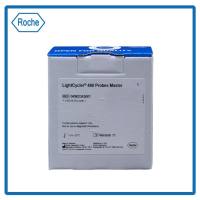Molecular Beacons: Fluorescent Probes for Detection of Endogenous mRNAs in Living Cells
互联网
660
A novel approach for detecting nucleic acid in solution has been adopted for real-time imaging of native mRNAs in living cells. This method utilizes hybridization probes, called “molecular beacons,” that generate fluorescent signals only when they are hybridized to a complementary target sequence. Nuclease-resistant molecular beacons are designed to efficiently hybridize to accessible regions within RNAs and then be detected via fluorescence microscopy. The target regions chosen for probe binding are selected using two computer algorithms, mfold and OligoWalk, that predict the secondary structure of RNAs and help narrow down sequence stretches to which the probes should bind with high affinity in vivo. As an example, molecular beacons were designed against regions of oskar mRNA, microinjected into living Drosophila melanogaster oocytes and imaged via confocal microscopy.









